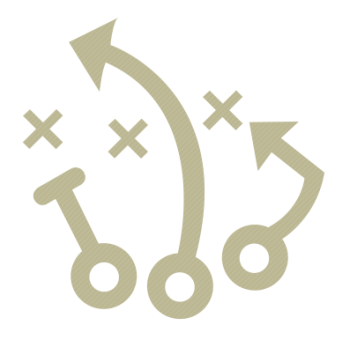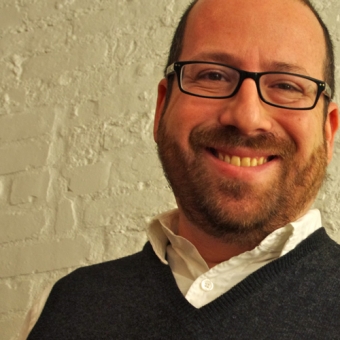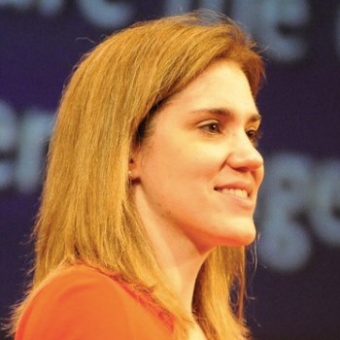
Features vs. Reality: Lessons from Georgia.gov

What You’ll Learn
- Consider why some typical content solutions wouldn’t work
- Examine the multi-faceted solution to Georgia’s complex content management issues

Optimizing your site to be recognized by the search engines isn’t a lost art — it’s a requirement. To be found, your meta information and content components need to speak to the terms users input into organic search just as much as they need to work with Google's formula.


What You’ll Learn


What You’ll Learn


What You’ll Learn


What You’ll Learn


What You’ll Learn


What You’ll Learn


What You’ll Learn


What You’ll Learn


What You’ll Learn


What You’ll Learn


What You’ll Learn


What You’ll Learn


What You’ll Learn


What You’ll Learn


What You’ll Learn


Over the next two decades, connected products will demand an unprecedented amount of user trust. Technologists and designers will ask the public for yet more of their attention, more of their data, more of their lives. AIs will know users’ deepest secrets. Co-operating devices will automate security and safety. Autonomous vehicles will even make life-or-death decisions for passengers. But ours is an industry still unwilling to grapple with the ethical, social, and political angles of this future. We mistakenly believe that technology is neutral; that mere objects cannot have moral relevance. And so we make embarrassing blunders—racist chatbots, manipulative research, privacy violations—that undermine trust and harm those we should help. This is a dangerous trajectory. We urgently need a deeper ethical dialogue about emerging technology, and interaction design’s role within it.


Why can’t we make it easier to be accessible?
Why can’t we aim for great user experiences that are also accessible? Creating accessible technology has to go beyond minimal compliance with standards that meets the law but may not be usable.
We need a bigger goal: creating delight for everyone. We’ll start by exploring what makes a delightful experience and how a good balance small pleasures and anticipated needs supports accessible UX in both big and small ways. Like any UX, this concern for users has to be part of every design decision.


What You’ll Learn


What You’ll Learn


The world of metrics and analytics have often been at odds with how designers work. Design is a process where we finely tune our intuition to create great user experiences. Yet, sometimes, what we think is best rivals the metrics. So which do we believe-our gut or the data?
In the world of measures, metrics, and Key Performance Indicators some practices, like the growth hacking approach to increasing Monthly Average Users (MAUs), have hurt the online experience of Instagram and LinkedIn. While alternatives to satisfaction and net promoter score give insight into the design process and help designers have better instincts.
If you’re ready to talk to your teams about what you really need, help management interpret the data, and create analytical experiments that provide design insights, don’t miss this talk.


What You’ll Learn


What You’ll Learn


What You’ll Learn


From Rosenfeld Media's Product Management + User Experience Virtual Conference.
Lots of product teams have progressed substantially over the past several years from very weak/novice to generally capable/competent. The dialog has moved from “why can’t we have a product designer or user researcher on our team?” to “why is it that our product manager and product designer are not always working together effectively?” and “why is it that the user research is being largely ignored when they have such seemingly valuable findings?”
This is actually progress, and we can see the improvements in the results, but in the commercial product world, it’s not sufficient to just have mediocre products, at least not for long. Our products have to provide substantial value over and above the alternatives. In this presentation, Inspired author Marty Cagan will focus on raising the game of product managers, product designers and user researchers. He will highlight several of the top issues/problems for these roles, and discuss how you can address each.


From Rosenfeld Media's Product Management + User Experience Virtual Conference.
Getting a team to work together and achieve a goal can be as much about picking the goal as picking the team. Too many companies fail at making big changes or tackling big problems because they fail to focus, prioritize, and motivate all members of the team.
In this talk, Christina Wodtke, author of the forthcoming Radical Focus: Achieving Your Most Important Goals with Objectives and Key Results, will teach you how to tackle and realize big goals in a methodical way using Objectives and Key Results (OKRs). You’ll learn the beauty of a good fail and how regular check-ins can keep you on track to success. Christina has devoted her career to tackling monumental tasks. She’s helped grow companies like LinkedIn, Yahoo, and the New York Times. Nowadays she works with startups and entrepreneurs, sharing her strategies for success and inspiring them to pursue big goals and outlandish dreams.


From Rosenfeld Media's Product Management + User Experience Virtual Conference.
UXers who practice user research and Product Managers have a lot in common. They both want to learn from users and customers and work hard toward developing successful products, features, or services.
However, sometimes they may feel disconnected from each other, perceiving one another as too slow, fast, biased, academic, disorganized, vague, and what not. During this talk, Tomer Sharon, author of It’s Our Research and the forthcoming Validating Product Ideas, will provide six practices—three for UXers, three for PMs—to work better together in researching users and their needs.
UX designers:
Product Managers:


From Rosenfeld Media's Product Management + User Experience Virtual Conference.
Product teams spend a lot of time making decisions about what the customer will experience. UX Designers make journey maps and interfaces. Product Managers build and prioritize roadmaps. Marketing writes copy and gets in front of potential users. Engineers make it all into a product. All too frequently, we do these things separately, which can lead to problems. Engineering doesn’t understand the ideal user flow. Designers don’t know why one feature is being built before a more important one. Marketing has a different vision of the ideal customer. And Product Managers have to run around explaining the vision to everybody on the team.
Some things are so important that they need to be created, shared, and understood by the whole team together. The User Lifecycle Funnel is one of those things. In this talk, Laura Klein, author of the forthcoming Build Better Products, will share a framework and a design thinking exercise for making sure that everyone on your team—including Product Managers and UX Designers—is united in their vision for just what exactly it is that you’re building. You’ll learn a quick, hands-on tool that will help you combine qualitative and quantitative data to determine and measure every step of your customer’s journey.


What You’ll Learn


What You’ll Learn


What You’ll Learn


What You’ll Learn


What You’ll Learn


What You’ll Learn


What You’ll Learn


What You’ll Learn


What You’ll Learn


What You’ll Learn


What You’ll Learn


What You’ll Learn


What You’ll Learn


What You’ll Learn


What You’ll Learn


What You’ll Learn


What You’ll Learn


What You’ll Learn


What You’ll Learn


What You’ll Learn


What You’ll Learn


What You’ll Learn


What You’ll Learn


What You’ll Learn


What You’ll Learn


What You’ll Learn


What You’ll Learn


What You’ll Learn


What You’ll Learn
Did you know that you can get instant 48–hour access to any seminar for just $19/seminar?